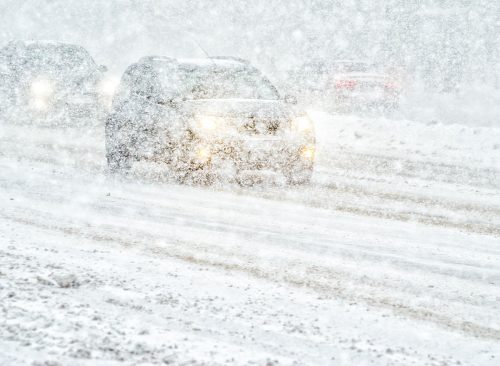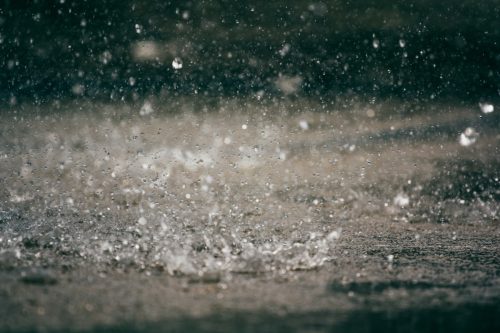Massive Winter Storm Hitting 70 Million This Week: “Now Is the Time to Prepare”

Winter has barely begun, and we’re already seeing back-to-back storms and severe weather. Just this past weekend, snow was falling up and down the East Coast—and now, several regions of the U.S. are gearing up for yet another storm. According to CNN Weather, roughly 70 million people should expect to feel the effects of the latest meteorological event, which may include blizzard conditions, flooding rain, and tornadoes. Read on to find out what experts are predicting for your region—and why they say “now is the time to prepare.”
RELATED: A “Polar Vortex” Is Expected to Hit the U.S. Soon—Here’s What to Know.
Blizzards are on deck for the Plains and the Midwest.

Last week, meteorologists with The Weather Channel anticipated that this storm, dubbed Winter Storm Finn, would bring “everything but the kitchen sink.” It appears those predictions are now coming true.
Across the Central and Southern Plains, blizzard warnings are currently in effect, spanning through early tomorrow morning, according to The New York Times. Colorado, Kansas, Nebraska, New Mexico, Oklahoma, and Texas should expect “ferocious blizzard conditions with whiteouts.” The National Weather Service (NWS) notes that this will be accompanied by gusts of wind between 60 and 70 mph.
Total snow accumulation in the Plains and the Midwest could range from several inches up to a foot, according to Fox Weather, with travel expected to be extra dicey due to limited visibility.
“A variety of hazards are anticipated with this next storm system,” Greg Carbin, branch chief of forecast operations for the NWS, told the NYT. “Travel may be impossible in some parts of the central U.S. as we go into the week.”
RELATED: 10 Ways to Prepare Your Home for a Snowstorm, According to Experts.
Those in the South will deal with rain.

According to the latest forecasts, those in the South should brace for thunderstorms and flash flooding today and tomorrow, as the storm pulls in moisture from the Gulf of Mexico.
Tonight, these severe thunderstorms are anticipated to hit the region spanning from Texas to Florida, per Fox Weather. This may include winds, hail, and potential tornadoes. CNN Weather notes that over 15 million people in this area are under a severe storm threat today, and tomorrow, over 35 million people from the Florida Panhandle to the Outer Banks of North Carolina will face the same threat.
The entire Southeast region may also deal with flash flooding, which is a major concern, meteorologists say.
“Widespread and potentially significant river and flash flooding are likely from the central Gulf Coast through much of the Eastern U.S. early this week,” the Weather Prediction Center says. “Powerful onshore winds will lead to widespread coastal flooding along the eastern Gulf Coast and much of the East Coast.”
RELATED: 8 Tips to Prepare for a Winter Power Outage, According to Experts.
The Northeast will be hit yet again.

Following the storm over the weekend, those in the Northeast are preparing for another bout of bad weather.
Fox Weather reports that rain and wind are expected to hit the region on Tuesday and Wednesday, where the ground is already wet or packed with snow. Because of this, experts say that flash flooding is also a risk.
According to CNN, the heavy rain will speed up the melting snow and water runoff, putting parts of New Jersey, New York, and Pennsylvania at a Level 3 out of 4 risk for flooding.
RELATED: How New “Extreme” Thunderstorms and Wind Are Increasing—And Affecting Where You Live.
Power outages are a big concern.

Fox Weather also notes that strong winds could result in downed power lines and trees, causing power outages in the Northeast. Wind gusts in this region, specifically, are anticipated to be anywhere between 50 and 60 mph, the outlet reports.
“Now is the time to prepare for this, making sure that you’ve got your food that you need … medication for yourself [or] for your pets, making sure everything is charged, ready to go for power outages, ” Fox Weather meteorologist Craig Herrera said in a forecast video.
While power outages are likely most likely in the Boston area and parts of New York, Herrera added that it’s possible they could be more widespread, affecting people as far south as North Florida.
RELATED: For more up-to-date information, sign up for our daily newsletter.